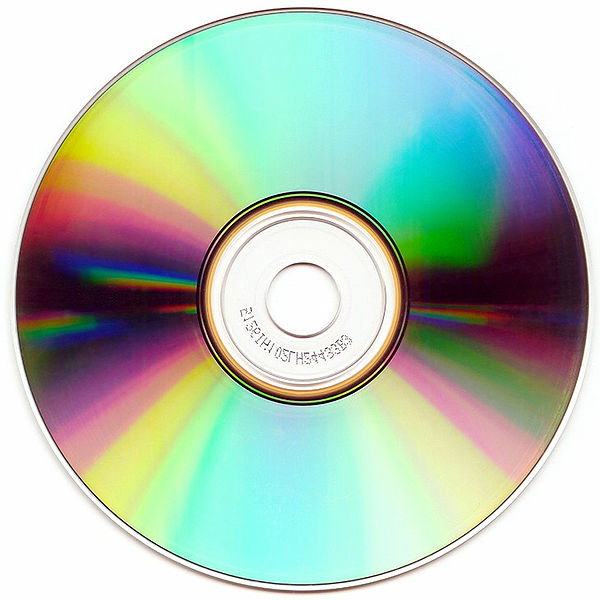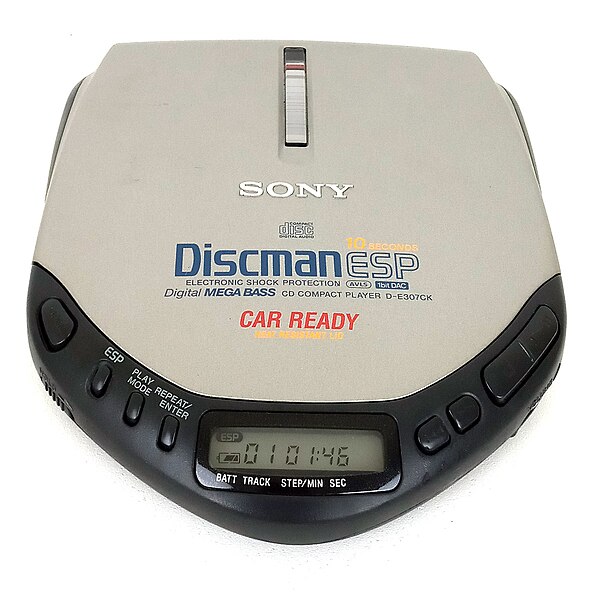The compact disc (CD) is a digital optical disc data storage format that was co-developed by Philips and Sony to store and play digital audio recordings. It uses the Compact Disc Digital Audio format which typically provides 74 minutes of audio on a disc. In later years, the compact disc was adapted for non-audio computer data storage purposes as CD-ROM and its derivatives. First released in Japan in October 1982, the CD was the second optical disc technology to be invented, after the much larger LaserDisc (LD). By 2007, 200 billion CDs had been sold worldwide.
The readable surface of a compact disc includes a spiral track wound tightly enough to cause light to diffract into a full visible spectrum.
Dutch inventor and Philips chief engineer Kees Schouhamer Immink was part of the team that produced the standard compact disc in 1980
Sony Discman D-E307CK portable CD player with 1-bit DAC
Pits and Lands of a compact disc under a microscope
An optical disc is a flat, usually disc-shaped object that stores information in the form of physical variations on its surface that can be read with the aid of a beam of light. Optical discs can be reflective, where the light source and detector are on the same side of the disc, or transmissive, where light shines through the disc to be detected on the other side.
The optical lens of a compact disc drive.
LaserCard made by Drexler Technology Corporation.
Optical discs are not vulnerable to water.
An earlier analog optical disc recorded in 1935 for Lichttonorgel [de] (sampling organ)








![An earlier analog optical disc recorded in 1935 for Lichttonorgel [de] (sampling organ)](https://upload.wikimedia.org/wikipedia/commons/thumb/5/55/Lichttonorgelversuchsscheibe.jpg/640px-Lichttonorgelversuchsscheibe.jpg)